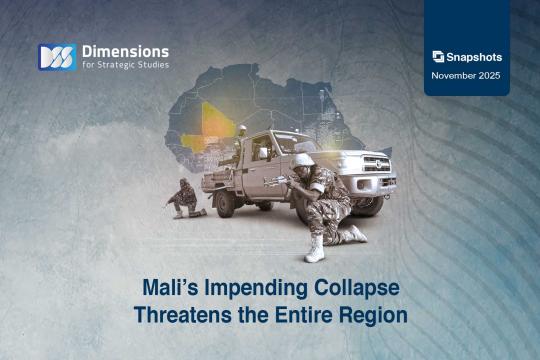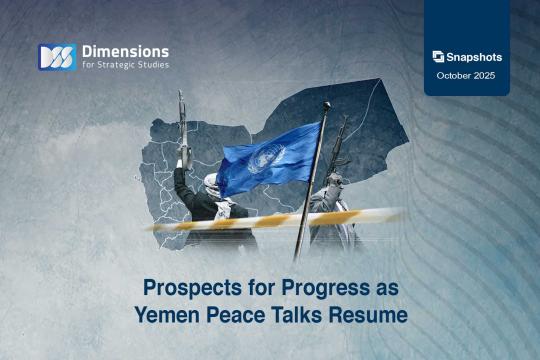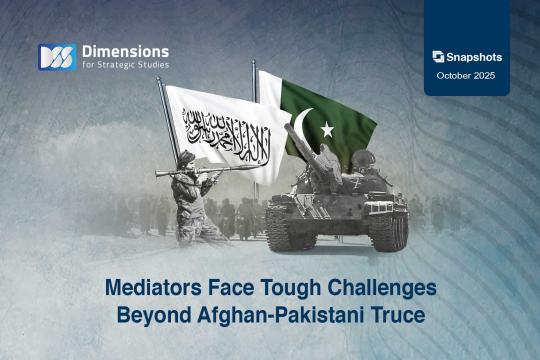
What Policies to Expect from Iran’s New President?
2024-07-193071 view
The election of Masoud Pezeshkian as President of Iran came as a surprise to many, especially as he faced stiff competition from prominent conservative candidates such as Mohammad Bagher Ghalibaf and Saeed Jalili. When he went head to head with Jalili in a run-off, fear of the hardliner appears to have given Pezeshkian a boost, prompting more Iranians to head to the polling stations in order to prevent Jalili from becoming president.
Indeed, turnout in the second round hit 50%, up from around 40% in the first. That said, overall voter interest remained low, even compared to previous presidential elections, reflecting the electorate’s lack of trust in the political system and the ruling elite in general. Doubts about the legitimacy of the Islamic Republic’s political system will continue to cast their shadow, but in the immediate term it is also important to examine how Pezeshkian will shape the country’s domestic and foreign policies. Will Iran shift tack or continue with business as usual? In which areas will the new president have freedom to maneuver? And what obstacles will he face?
Pezeshkian is likely to focus most of his energies on addressing domestic, social and economic issues. He may also attempt to bring about social changes, but in a gradual and cumulative way. Radical changes or transformations are beyond the mandate of the presidency, given the nature of Iran’s political system.
However, it is important to note that Supreme Leader Ayatollah Ali Khamenei will have little choice but to give Pezeshkian at least some room for maneuver. Failing to do so risks further damaging the regime’s legitimacy and provoking street protests like those seen several times over the past decade—most notably the nationwide demonstrations after student Mahsa Amini died in police custody in 2022 after being arrested for allegedly not wearing the hijab to government standards.
Indeed, Pezeshkian has spoken of his desire to abolish the mandatory hijab. He also wants to remove controls over the internet, promote civil liberties and give more rights to ethnic and religious minorities.
Yet the new president will not find that any of these changes come easily. For a start, he is likely to face obstacles in parliament, which is filled with conservatives opposed to Iran’s reformist movement. Iran’s powerful religious institutions will also resist attempts to abolish the mandatory hijab or free up internet and media access, as this would contradict the Islamic revolution’s goals of promoting state-sanctioned interpretations of Islamic culture and values.
That said, he may have more room for maneuver when it comes to the status of ethnic and religious minorities within state bodies, as a way of appeasing those who voted for him and in order to assuage the tensions that have accumulated in society over recent years due to the regime’s totalitarian policies. Such moves could also help in mending ties with Iran’s neighbors.
Pezeshkian will also have some freedom on the economic front, as he seeks to tackle Iran’s pressing socio-economic crises: rampant inflation, corruption and economic mismanagement, as well as crippling shortages of housing and jobs. He placed these issues at the forefront of his presidential campaign, and there is a strong likelihood of campaigns targeting corruption. He may well launch campaigns against graft similar to those seen under previous administrations, although these have largely been aimed at finding scapegoats rather than tackling the real causes of corruption: excessive power in the hands of Iran’s conservative elite, who have abused it to create patronage networks that permeate all aspects of the Iranian political system.
Pezeshkian is also aware that he needs to handle the most sensitive issue of all, especially as concerns Iran’s international relations: its nuclear program. Global sanctions have crippled the Iranian economy and left the country with no real prospect for investment, growth, or productivity unless and until it can free itself from them. Even the Supreme Leader appears supportive of moves to settle the nuclear issue in order to address Iran’s pressing economic woes.
Pezeshkian argues that Iran’s economic fortunes are tied to its compliance with Financial Action Task Force (FATF) anti-money-laundering regulations on combating terrorist financing and money laundering. Investors and banks do not want to deal with an Iran that is blacklisted and cut off from the international financial system. However, exposing Iran’s financial transactions, proxy networks and support for militias is a deeply unattractive prospect for the Islamic Revolutionary Guard Corps (IRGC) and the conservative elite. Any moves Pezeshkian makes on this file will likely face stiff resistance in parliament.
As concerns Iran’s foreign relations, Pezeshkian is open to reconciliation with the West in general and the United States in particular, calling for direct talks rather than negotiations via intermediaries. He wants to reach a final agreement on the nuclear file and work to reach understandings on other contentious issues with the West. He may find some success on this issue: Khamenei, despite his public opposition to a conciliatory approach to the West, has behind closed doors urged the Iranian government to engage with Western powers in order to ease some of the burdens on the economy.
However, regional issues such as Gaza, Lebanon, Iran’s armed allies in the region, and the Red Sea crisis will be beyond Pezeshkian’s jurisdiction. These issues are the prerogative of the IRGC and its Quds Force, and no Iranian president has a say in them. At most, the president and his foreign minister will seek to prioritize these issues, within the lines laid out by the IRGC, the Supreme Leader, and the Supreme National Security Council.
Despite the reformist president’s desire to mend ties with the West, he has no intention of reversing Iran’s turn to the East, and hopes to strengthen bilateral relations with China and Russia.
Regarding China, Pezeshkian wants to activate a 25-year comprehensive agreement signed with Beijing, although this faces obstacles in the form of global sanctions and Iran’s FATF blacklisting. Pezeshkian is also expected to meet Russian President Vladimir Putin on the sidelines of a meeting of the BRICS bloc in Russia in October to discuss deepening bilateral relations with Moscow. Iran’s rapprochement between Iran and the Gulf Cooperation Council is likely to continue; Pezeshkian has expressed a desire to establish good relations with Iran’s neighbors and continue the conciliatory strategy of Raisi’s administration.
This multidirectional approach will be a key feature of foreign policy under Pezeshkian. Instead of putting all Iran’s eggs in Chinese or Russian baskets, he will seek to diversify the country’s foreign policy, avoid becoming dependent on any single ally, and instead seek economic, defense, and security benefits from alliances with a variety of countries. Through this, he will seek to build multilateral relations and balance competing forces, both in the region and internationally.





